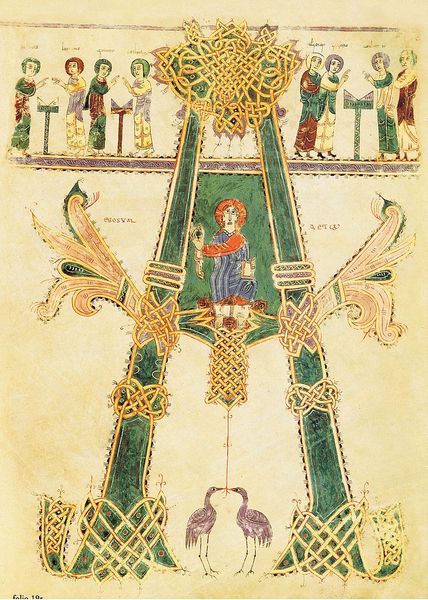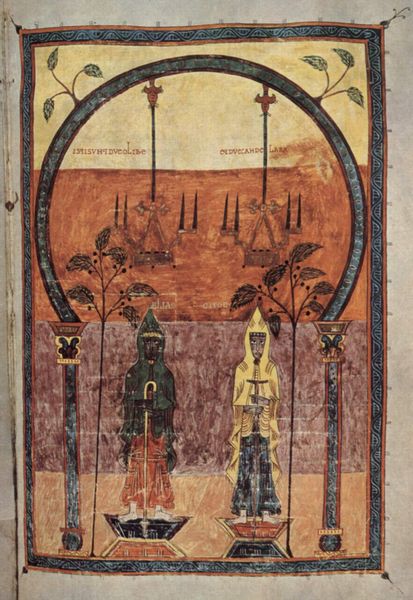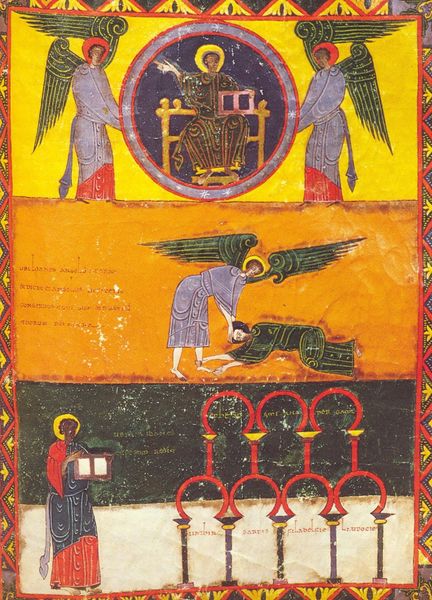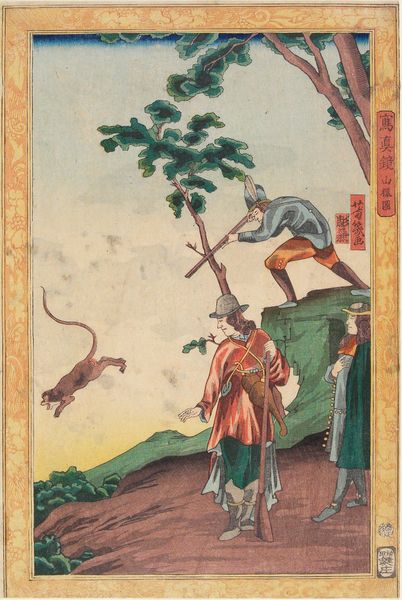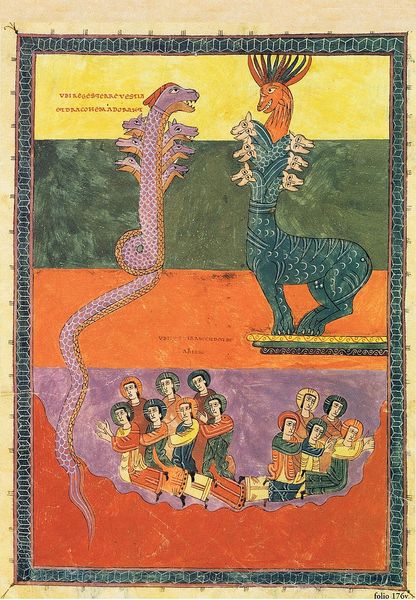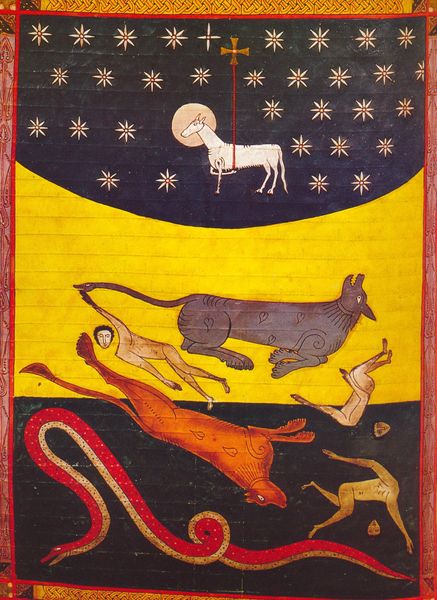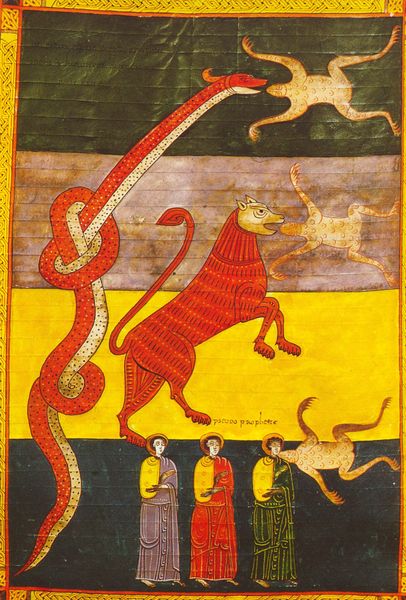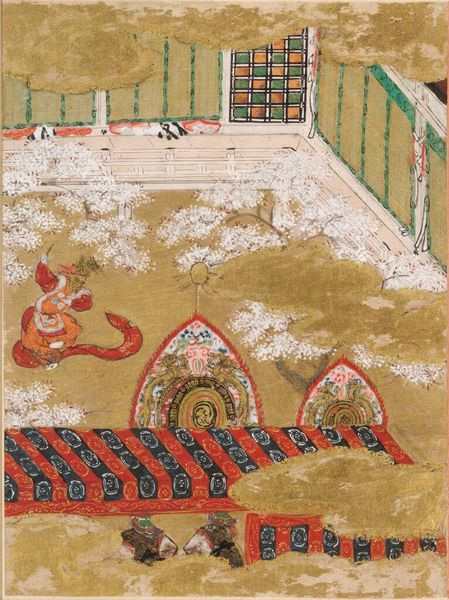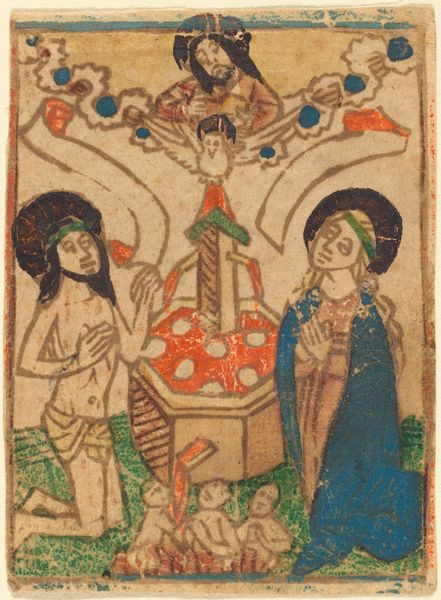
painting, paper, ink
#
medieval
#
allegory
#
painting
#
figuration
#
paper
#
romanesque
#
ink
#
coloured pencil
#
mythology
#
miniature
Copyright: Public domain
Editor: So, here we have "Prologue. On the Synagogue: the woman seated upon the beast," created around 975 by Ende. It’s an ink and colored pencil drawing on paper. There's something very striking and unusual about this imagery - this figure on a beast raising a chalice. What jumps out at you? Curator: What a fascinating constellation of symbols! Look at the “beast” – a composite of horse and lion, clearly allegorical. Consider the woman: in one hand, she presents a golden chalice; what might that symbolize, set against the backdrop of a "Synagogue?" This resonates with images of Ecclesia and Synagoga, personifications of the Church and Synagogue. Editor: Ah, so she’s not just a random woman – she represents something larger. That makes me wonder about the beast as well, perhaps as a symbol for subjugated power or… what do you think? Curator: Exactly! Notice the posture, the regality… yet there's a certain vulnerability in her gesture. What cultural memories do you think this imagery might evoke, given its historical context? The Synagoga is typically shown defeated; is that also on view, despite her regal nature? Editor: It's like she's in transition, between power and defeat, maybe. Also, the golden, laden tree above feels significant, perhaps representative of life or knowledge? The visual language feels very charged and deliberate. Curator: Indeed! Consider also how color amplifies these tensions. The woman in her gold and blue clothing is offset against the tan beast with her vacant gaze... There is some emotional or psychological undertone that lingers across time. Editor: That's given me a whole new perspective on seeing how symbols shape narratives, even without knowing all the specifics. Thank you. Curator: My pleasure. Visual language is a testament to our shared cognitive and cultural heritage, a powerful reflection.
Comments
No comments
Be the first to comment and join the conversation on the ultimate creative platform.
